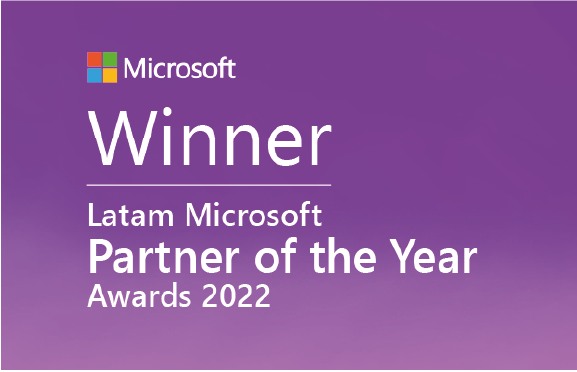The term cloud computing has become an indispensable tool in the world of modern technology. With its emergence, it has revolutionized the way organizations and individual users access and manage their computing resources.
From its inception in 1999, when Salesforce introduced one of the first business models using this technology, to the present day, cloud computing continues to transform enterprise data and information management. Let’s take a closer look at its fundamentals, types, advantages and applications within business.
Definition and basic concepts of cloud computing
Cloud computing is a model for delivering computing services over the Internet. These services include servers, storage, databases, networks, software, data analysis, artificial intelligence and more. This technology helps businesses by offering flexibility and on-demand management of IT resources.
One of the key components of cloud computing is scalability, which provides adaptive resources that adjust according to users’ needs. Thus, it is possible to increase or reduce services efficiently and economically, which is not possible with traditional computing systems.
In addition, this model promotes collaboration through its ability to share information remotely and securely, making it a viable option for remote work and global operations.
Types of cloud computing
There are several classifications within cloud computing, but there are three main types:
- Infrastructure as a Service (IaaS): Provides fundamental IT components such as servers and storage.
- Platform as a Service (PaaS): Provides development tools and platforms to create online applications without the need to manage the underlying hardware.
- Software as a Service (SaaS): Delivers fully functional software applications over the Internet.
These types of cloud services can be deployed in public, private or hybrid cloud models, depending on the company’s specific security, control and management requirements.
Advantages of cloud computing
Opting for cloud services offers multiple advantages of cloud computing, including:
- Cost-effectiveness: Reduces operational expenses by eliminating the need to invest in physical IT infrastructure.
- Elasticity: Allows companies to scale IT resources up or down as needed.
- Accessibility: Enables access to data and applications from anywhere, on any device with an Internet connection.
- Disaster recovery: Improves data recovery capacity and business continuity thanks to the redundancy of the cloud.
In addition, it offers advantages in the field of innovation, as it enables easy and fast integration of emerging technologies such as AI.
Applications of cloud computing in business
The applications of cloud computing in the business context are vast and varied. Companies of all sizes use the cloud to:
- Store and process large volumes of data.
- Hosting websites and blogs.
- Host applications, such as Microsoft Dynamics.
- Deliver email and video content on demand.
- Perform predictive analytics and support decision-making processes.
- Develop and test applications.
In addition, services such as Gmail and cloud-based office applications such as Office 365 have become indispensable to the day-to-day life of many organizations.

Main cloud computing providers
The dominant entities in the cloud computing market are companies that have developed robust platforms and services, capable of meeting the needs of millions of users. Among them, the following stand out:- Microsoft Azure: Offers a wide range of services and integrates seamlessly with Microsoft products.
- Amazon Web Services (AWS): Considered one of the most complete and widely adopted platforms.
- Google Cloud Platform: Recognized for its data analytics and machine learning tools.
Cloud computing security
Security in cloud computing is a top priority for both providers and users. Security challenges include data protection, identity and access management, and regulatory compliance. Cloud providers invest significantly in advanced security technologies to ensure the integrity and confidentiality of information hosted on their platforms.In addition, it is recommended that companies adopt their own security policies and procedures to complement the protection measures offered by cloud services.
Related questions about the basics and uses of cloud computing
What is cloud computing and what is it for?
Cloud computing is a model for providing IT services over the Internet that allows users and companies to access IT resources on demand. It serves to streamline operations, reduce costs and facilitate scalability and business flexibility.
It is also essential for the development of new applications, information storage and data analysis, offering efficient solutions for a variety of business and personal needs.
What types of cloud computing are there?
The main types of cloud computing are IaaS, PaaS and SaaS, and each focuses on providing different levels of cloud services. IaaS provides basic infrastructure resources, while PaaS and SaaS deliver software development and application platforms, respectively.
The choice between these types depends on the technical needs, management expertise and business requirements of each organization.
Where is cloud computing used?
Cloud computing is used in a multitude of scenarios, from mobile applications and software development to big data analytics and machine learning. Enterprises use it to host their IT infrastructure, e-commerce platforms, customer relationship systems and many other business-critical applications.
Individual users use it for storing personal data, such as photos and documents, and for using cloud-based productivity and entertainment applications.
What are the main features of cloud computing?
The main characteristics of cloud computing include scalability, on-demand access, service metering, wide network access and fast data retrieval. These attributes provide a flexible and efficient technology foundation that supports the growth and adaptation of enterprises in the dynamic digital world.
In addition, the ability to pay only for the resources used, known as pay-per-use, is another distinctive and advantageous feature of the cloud computing model.






